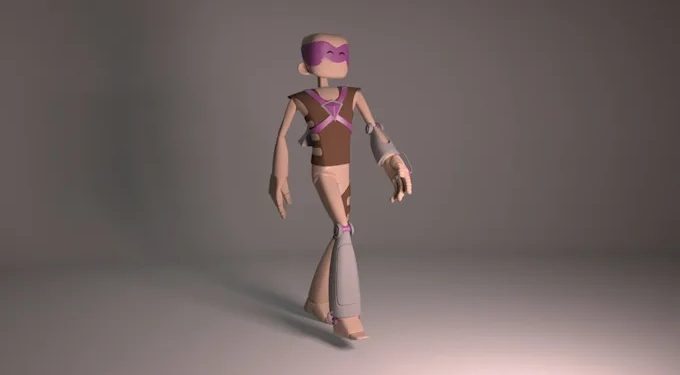In today’s digital-first world, businesses need to communicate clearly, quickly, and creatively. Whether you’re pitching a product, explaining a service, or simplifying a complex idea, video content has become the go-to tool for audience engagement. Among all formats, explainer videos stand out for their ability to break down complicated information into easy-to-understand visuals.
And with advancements in technology, companies are moving beyond simple 2D graphics into more immersive formats, giving brands a fresh way to stand out in a competitive market.
But how do you go from an idea to a polished 3D explainer video that actually delivers the message? Here’s a step-by-step guide to the process.
Step 1: Define Your Objective
The foundation of every great explainer video is clarity of purpose. Before production begins, ask:
- What do I want my audience to know, feel, or do after watching?
- Am I educating, persuading, or building brand awareness?
- Who is my target audience, and what problems are they trying to solve?
A well-defined objective not only shapes the message but also influences the style, tone, and length of the video. For instance, a startup looking to pitch to investors may need a concise, professional video, while a consumer brand might opt for a more playful and engaging tone.
Step 2: Develop a Compelling Script
The script is the backbone of an explainer video. A well-written script ensures the message is clear and engaging. Some tips for writing an effective script include:
- Keep it short and focused. Explainer videos work best when they are 60–120 seconds long.
- Start with the problem. Hook your audience by addressing their pain points.
- Offer your solution. Clearly explain how your product or service solves the issue.
- End with a call-to-action. Tell viewers what to do next—visit a website, sign up, or get in touch.
Think of the script as the bridge between your business and your audience. It must balance professionalism with relatability.
Step 3: Storyboarding and Visual Planning
Once the script is approved, the next step is translating it into visuals through a storyboard. This step maps out each scene, showing how the story will unfold. It also defines transitions, character movements, and graphic elements.
For 3D animations, this stage is even more critical because it determines how models, textures, and camera angles will be used. A storyboard ensures everyone—from writers to animators—is on the same page before production begins.
Step 4: Choosing the Right Style
Explainer videos come in various formats, from 2D illustrations to full-scale 3D animation. Each serves a different purpose:
- 2D animation is ideal for simple concepts or lighthearted content.
- Motion graphics suit data-heavy presentations in professional industries.
- 3D animation adds depth, realism, and dynamic visuals that help brands stand out.
For example, 3D animation for Perth-based businesses has become an increasingly popular choice, particularly for industries wanting to showcase products or services in detail.
Step 5: Animation and Production
This is where the creative vision becomes reality. Designers build digital models, animate characters, and carefully craft environments. Attention to lighting, pacing, and camera angles ensures the final product feels polished and professional.
The process is detailed, but it’s also the stage where the message truly comes alive.
Step 6: Audio and Narration
No video is complete without sound. A professional voiceover guides the viewer and reinforces the message. Adding background music and subtle sound effects can make the video even more engaging.
Whether upbeat, serious, or inspirational, audio choices should match your brand’s tone.
Step 7: Review and Refine
Before a video goes live, it undergoes thorough revisions. This stage involves gathering feedback from stakeholders, making adjustments, and ensuring the visuals and audio align with business goals.
Step 8: Distribution and Measurement
Once complete, your explainer video should be shared widely—on websites, social media platforms, and even at events. Tracking engagement and conversions helps determine ROI and provides insights for future campaigns.
Why Explainer Videos Work
Explainer videos succeed because they simplify complex information. They combine storytelling with visuals and sound, making the message both easy to understand and memorable.
Viewers are more likely to engage with a short, well-produced video than a lengthy text explanation. That’s why many companies now use explainer videos as a core part of their marketing strategies.
Why Businesses Are Shifting to 3D
The demand for 3D is growing rapidly. Unlike 2D, which feels flat, 3D adds realism and immersion. This makes it especially effective for industries like tech, health, and manufacturing.
It’s also ideal for startups and enterprises alike that want to present a modern, cutting-edge image to their audience.
Partnering With Experts
Creating an explainer video involves a lot of moving parts—scriptwriting, design, animation, sound, and editing. That’s why working with an experienced studio is invaluable. Agencies like Creativa specialise in producing professional videos that communicate ideas effectively and creatively.
From helping brands launch products to showcasing community organisations, explainer videos continue to prove their value across industries. And with options like 3D, the possibilities are expanding faster than ever.
Final Thoughts
Explainer videos aren’t just about explaining—they’re about connecting. With the right process and creative approach, businesses can transform ideas into stories that inspire action.
Whether it’s a startup simplifying its pitch or a brand showcasing a new feature, explainer videos remain one of the most powerful tools for communication. With advancements like 3D animation, the future of video storytelling looks even more exciting.













































































